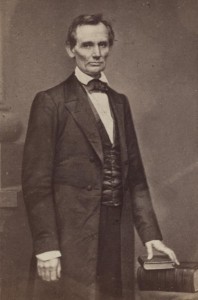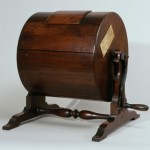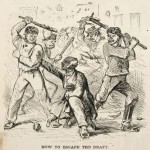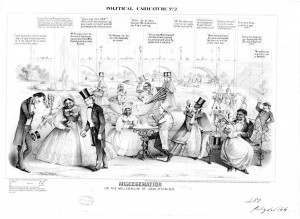 The New York Historical Society is putting on a fascinating exhibit about Abraham Lincoln’s relationship with New York. From his first campaign until his assassination, New York loomed large for Lincoln.
The New York Historical Society is putting on a fascinating exhibit about Abraham Lincoln’s relationship with New York. From his first campaign until his assassination, New York loomed large for Lincoln.
Its 35 electoral votes were key to his first victory, and the picture Matthew Brady took of him after his famous Cooper Union address in 1860 played a major role in changing his rail-splitter prairie hick image into the dignified statesman image that we see him as today.
New York was also a whole different kind of battlefield during the war. It was the Union’s primary provider of soldiers, money, media. Abolitionism was strong in the state and well-represented politically, but so was some truly heinous racism. The 1863 Draft Riots went on for 4 days and caused more death and destruction than anything besides the war itself.
Lincoln’s supporters formed an organization, the Wide Awakes, with its own paramilitary uniforms and songs. In 1860 30,000 Wide Awakes marched in a five-hour torchlight parade through New York City streets; one of their torches, amazingly, is on display here. But the same number of marchers gathered in 1863 for a demonstration against Lincoln and his policies.
This exhibition steers deftly in these churning waters, pointing out that even allies had differing shades of opinion. Lincoln’s advocates became known as the Loyalists and are portrayed in an image as if seated at an upper-crust dining room table, paying homage to a strong central Union. […]
There is less complexity here in the portrait of the Democratic Copperheads, who are shown at a tavern, perhaps because one of their leaders, Fernando Wood, was a bar owner before he became mayor of New York. But the Copperheads also included wealthy merchants who saw their fortunes threatened by the end of trade with the South, as well as ardent defenders of slavery, like Samuel F. B. Morse.
One of the most fascinating artifacts here is a book Lincoln owned of satirical limericks attacking these opponents. (“There once was a Copperhead vile…”) A touch screen allows you to read every page.
For those of us who aren’t going to be in New York between Friday and March 25th, the exhibition website is nicely set up, with lots of pictures of detailed explanations.
Examples of artifacts from the Draft Riots:


One of many examples of racist anti-abolitionist propaganda, this one of the “look what’ll happen if Lincoln and the abolitionists have their way” school:

It’s a shame it won’t be around for longer. it’s not as if Manhattan is running out of exhibition spaces… or is it?
——————————
The End is Coming
History Will be Back…
http://endiscomingblog.com
Also on History News Network (hnn.us)
It’s part of the bicentennial celebration of Lincoln’s birth (1809), so you couldn’t really expect it to last longer than 5 months, 3 of them the year after the bicentennial, I don’t think.